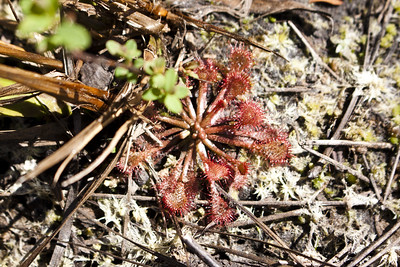Paddling the Wild Neches | A Review
A few months ago we were in REI when I spotted this book, Paddling the Wild Neches. Having spent the better part of spring and summer working on and around the Lower Neches River near Beaumont I thought it would be a fascinating read.
Ever since we did our two thru-thikes I have been intrigued by those who also paddle source to end (or sea) down rivers, particularly relatively unknown or lesser known rivers such as the Neches. I think many people in Texas know about the Sabine since part of it forms the boundary of Louisiana and Texas, or maybe the Trinity and Red Rivers, or particularly the Guadalupe or Comal since are tubing rivers in the summer time.
But the Neches? Or the Angelina? Or the multitude of other streams, creeks and small rivers that surround those two rivers? Not many except those who are familiar with the land in east Texas and even then those will be a relative few.
The author, Richard Donovan, sets out to revisit the river and surrounding lands that he grew up on. He had a history of working for Temple-Inland, well known for their pine plantations and logging in and around the Piney Woods/Big Thicket. In the late 90s and early 00s two dams were being proposed along the river, the Fastrill Dam which would help support Dallas’ thirst for water, and the Rockland Dam, which would also help aid in Dallas’ thirst but also the surrounding ares of east Texas. The Fastrill Dam has since been stopped by the Supreme Court (if you click on the Fastrill link). As far as I can tell the Rockland Dam is still being proposed.
So, Donovan sets off down the river starting not at the source in Van Zandt county near Lake Palestine and ending at B.A. Steinhagen Lake in the south. A couple of years later he paddles the original route but then adds in the final southern portion all the way to Beaumont with a varying group of reporters and friends to join him.
Overall I really enjoyed this book but was disappointed in some of the lack of detail. He includes great anecdotes of the history of the area, stories about bears and albino deer (that ended up being a goat), bootlegging and days of the ‘open range’ before barbed wire and folks were able to hunt and gather on any land they pleased. The days of fencing properties occurred when too many cattle were wandering around in the middle of roads causing accidents. The fencing properties led to game theft and trespassing and a spirit of debauchery that was eventually slowed when the timber companies began putting together hunting camps.
He also writes about the impacts of logging, not only to the local economy but to the forests. The logging of the virgin pine and bottomland hardwood forests was done heavily in the early 20th century, but provided jobs for the local towns until the areas was cleared completely and they moved to another region. Then the towns were hollow shells of their former tent camp selves. I can only imagine what the vast stands of longleaf pine looked like prior to their near eradication and subsequent replacement by tight stands of loblolly pines.
The river itself is mostly untamed with the exception of two lakes and the salt water barrier dam located in Beaumont. At the time of the book’s writing the dam was being built; this summer it was definitely in operation….or rather not because they wanted to hold back water to the north due to the drought. Donovan also tells tales of the river being traversed by paddle and steam boats in the 1800s and I can’t imagine that because the river isn’t all that large, but apparently they did make their way a good distance up the river. Then they would be log jammed, literally, because the loggers would send all the logs they cut upstream into the river to float down to Beaumont to the mills. Sometimes the logs would get stuck when the water level dropped; the author surmises that some of these logs are still under the water and in near perfect condition.
If you are looking for a different book to read, something adventurous but also environmentally relevant to the current politics of the Texas environment, definitely pick this book up.
+Paddling the Wild Neches via the Conservation Fund
+A Trip Report
+Article on the author in Texas Monthly
+Transcript from an interview with Donovan
+August 2011 article on how other places are tearing dams down, Texas is going for more.
+Drought Schmout from 2009 about DFWs largest water users. Ross Perot is on that list.
Now it is time for some frivolous reading as I have finally got hold of a copy of The Help.

One Comment
Nick King
Reflections On The Neches by Geraldine Watson is a much better book in my opinion. It talks about the Lower Neches (Dam B-Beaumont) including the Beaumont Unit in great detail.